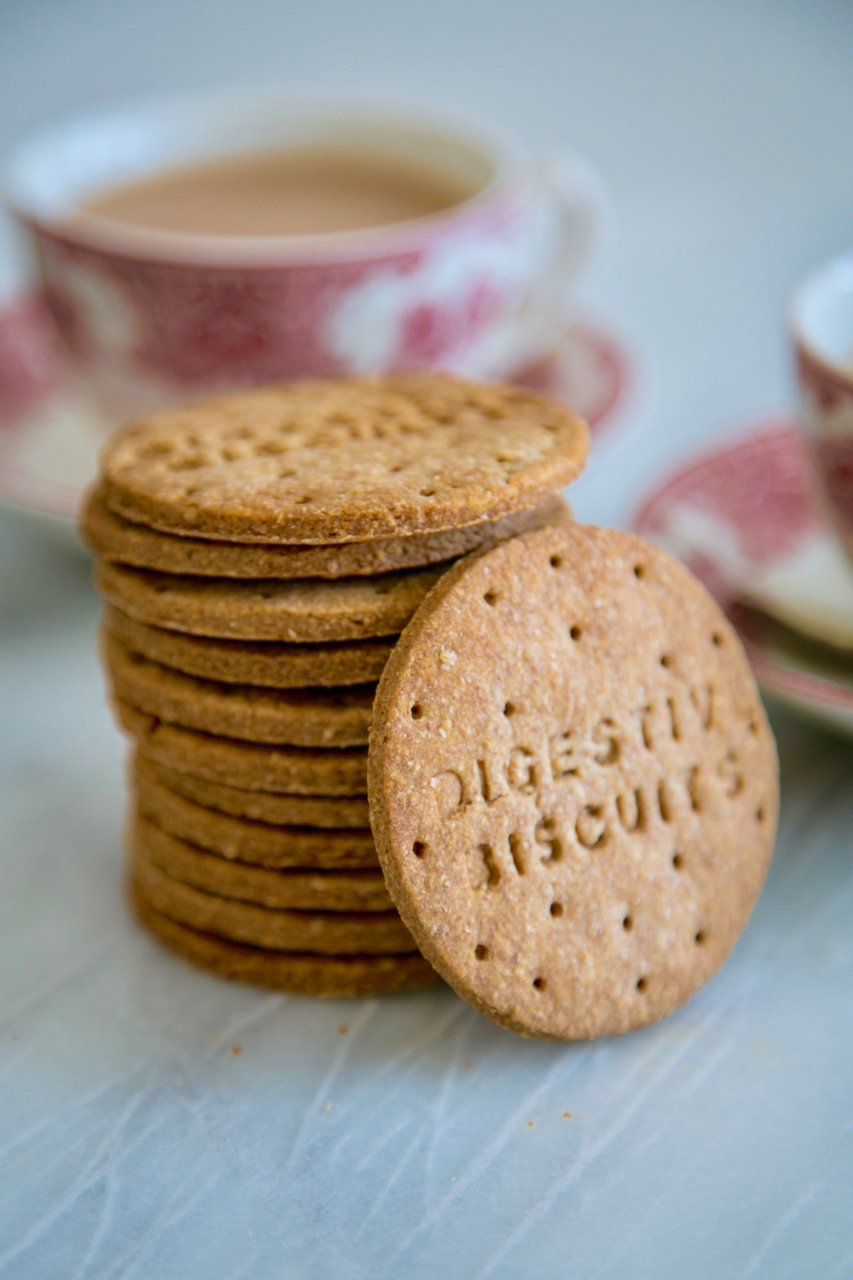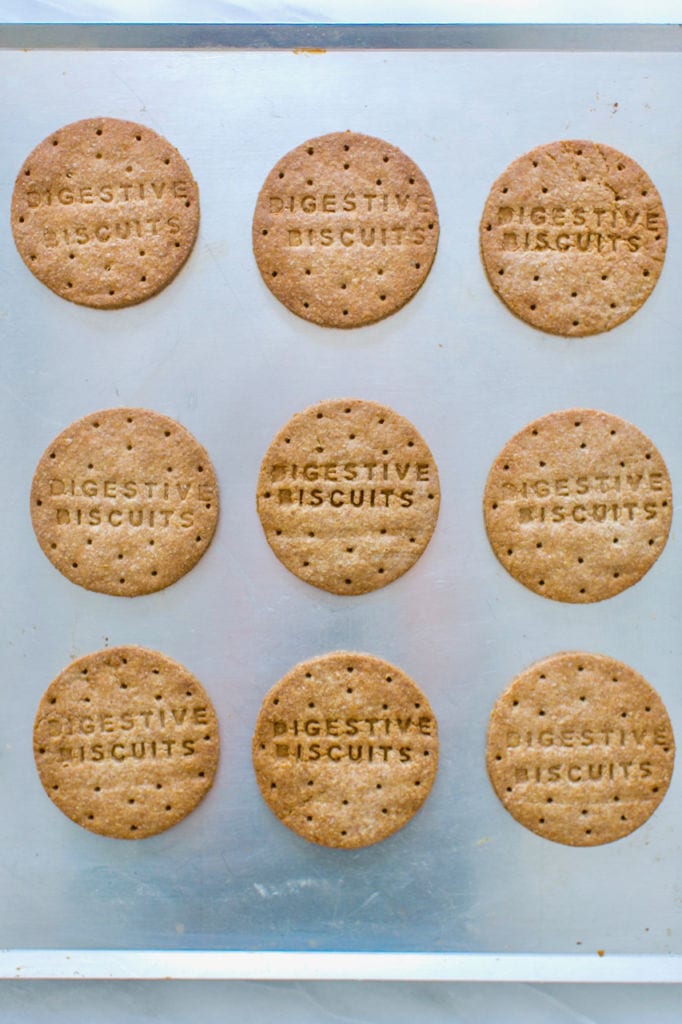Hi Bold Bakers! WHY YOU’LL LOVE THIS RECIPE: This recipe for homemade digestive biscuits brings together health and flavor in every bite. Already have an account?
Wholesome Ingredients: Made with simple, nutritious ingredients that support a balanced diet. Perfectly Crispy Texture: Enjoy a satisfying crunch with every bite. Versatile Use: Ideal for snacking on their own or as a base for delicious desserts.
Table of Contents
What Are Digestive Biscuits?
Digestive biscuits are a type of semi-sweet, crisp, and crunchy cookie commonly enjoyed in Ireland and the UK. They’re often compared to Graham crackers in the U.S. due to their similar use in recipes, but they have distinct characteristics. IMPORTANT NOTE: This recipe was improved and updated on 9/18/2024, to include explanations of key ingredients, answers to the most frequently asked questions, make-ahead and storage instructions, and Pro Chef Tips.
Comparison:
Texture: Digestive biscuits are crisp like shortbread and equally buttery, while graham crackers have a slightly more grainy texture. Sweetness: Both are semi-sweet, but digestive biscuits have a more pronounced buttery flavour. Usage: Digestive biscuits can be used interchangeably with graham crackers in recipes, but they add a richer taste. Regional Difference: In Ireland, “biscuits” refer to crisp cookies, unlike the soft, bread-like biscuits in the U.S. Digestive biscuits fall into this category of crisp, crunchy cookies, differing from the soft and chewy texture of what Americans typically think of as cookies.
Why Are They Called Digestive Biscuits?
The term “digestive” comes from the 19th century and means that it aided digestion. In 1839, a pair of Scottish doctors invented the digestive. Digestive biscuits were thought to have the same fundamental properties and health benefits you might find in an antacid due to the usage of sodium bicarbonate in the digestive biscuit recipe. Sodium bicarbonate is the sole ingredient for baking soda. We’ll be using baking powder, which in addition to sodium bicarbonate, also contains monocalcium phosphate and either sodium acid pyrophosphate or sodium aluminum sulfate. In 1892, Alexander Grant developed and patented the original, prototypical recipe for McVitie’s digestive biscuits.
Tools You Need
Mixing bowls Measuring cups Measuring spoons Blender (optional) Rolling pin Cookie cutter (2 ½ inches in diameter) Fork Cookie sheet Parchment paper Wire rack
Key Ingredients
Whole wheat flour Provides the primary structure and texture. Its coarse grind gives digestive biscuits their signature crunch and nutty flavor. In Ireland and Europe, coarse-ground flour is easily accessible and used for graham crackers. But in America, the common option is fine ground, which will also work well. Baking powder It acts as a leavening agent, helping the biscuits rise slightly and achieve a lighter texture. Salt Enhances the flavor of the biscuits and balances the sweetness. Powdered sugar Sweetens the biscuits and contributes to the overall flavor. It also helps in browning and crisping the edges. Butter Adds richness, flavor, and helps achieve a tender, crisp texture. It also aids in the binding of the dough. Milk Moistens the dough and helps bind the ingredients together, making it easier to roll and shape.
How to Make Digestive Biscuits
Prep
Make the digestive biscuit dough
Shape the dough
Bake the dough
Gemma’s Pro Chef Tips
Digestive biscuits are always made with whole wheat flour. For a heartier taste, use stone ground whole wheat flour and for a more delicate biscuit, try white whole wheat flour. For more information about whole wheat flour, see this article. In Ireland and Europe, coarse-ground flour is easily accessible and used for graham crackers. But in America, the common option is fine ground, which will also work well. You can use a food processor to make this dough: pulse the dry ingredients to mix, pulse in the butter until the mixture resembles coarse crumbs, then pulse in the milk until large clumps form. Press together into a ball, then roll and cut. Work quickly when making this dough so the butter stays cold. If the dough seems soft and difficult to work with, refrigerate for 30 minutes before rolling. These biscuits can be used in place of graham crackers not only to make a Cookie Crust, but also to make Homemade S’mores! Make Chocolate Digestive Biscuits by spreading some Tempered Chocolate onto the baked biscuits once they are cooled.
Make Ahead and Storage Instructions
Make Ahead:
Dough Preparation: You can prepare the dough up to 2 days in advance. After mixing, wrap the dough tightly in plastic wrap and refrigerate. When ready to bake, allow the dough to soften slightly at room temperature before rolling it out. Freezing Dough: For longer storage, you can freeze the dough for up to 2 months. Wrap it in plastic wrap and place it in a freezer-safe bag. Thaw in the refrigerator overnight before using. You can also roll, cut and stamp this dough, then freeze the unbaked biscuits in a single layer on a parchment-lined baking sheet. Store frozen biscuits in an airtight container. Defrost for 10 minutes at room temperature before baking.
Storage:
Room Temperature: Once baked, store the digestive biscuits in an airtight container at room temperature. They will stay fresh and crispy for up to 1 week. Freezing Biscuits: You can also freeze the baked biscuits. Place them in a freezer-safe bag or container with parchment paper between layers to prevent sticking. Freeze for up to 3 months. To enjoy, let them thaw at room temperature or warm them in a low oven for a few minutes to restore crispness.
Are digestive biscuits healthy?
Fundamentally a dessert, digestive biscuits won’t magically help accelerate weight loss. But they are a more nutritious alternative to a standard cookie due to their wholemeal flour contributing fiber and nutrients. Because they still contain sugar and butter, they should be enjoyed in moderation.
What is the best way to enjoy digestive biscuits?
Digestive biscuits are commonly enjoyed with a cup of tea or coffee. They can also be used in recipes or paired with cheese or chocolate for a delightful snack. Dunking them in tea softens digestive biscuits, and in Ireland, tea is enjoyed all day long. Even now, living in the States, I keep the tradition alive with a daily tea time at 3 o’clock, where I relax with a cup of Irish tea.
What Can I Make With Digestive Biscuits?
These can be ground up into crumbs and used in place of Graham cracker crumbs to make no-bake pie crusts for a whole variety of pies and cheesecakes. They can also be crushed into larger chunks and added into ice cream or trifles for unbelievable texture and flavor.
Try More Cookies and Crackers Recipes!
Homemade Biscoff Cookies Homemade Graham Crackers 3 Ingredient Shortbread Cookies Homemade Ladyfingers Animal Crackers
IMPORTANT NOTE: This recipe was improved and updated on 9/18/2024, to include explanations of key ingredients, answers to the most frequently asked questions, make-ahead and storage instructions, and Pro Chef Tips. And don’t forget to buy my Bigger Bolder Baking Cookbook! Full (and printable) recipe below!





